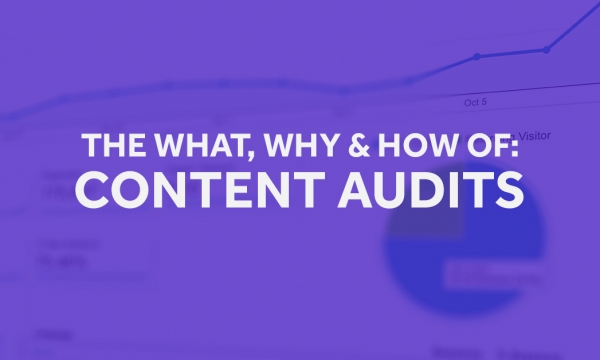When developing your content marketing strategy, you are naturally going to focus on your own brand’s particular needs, strengths and objectives. But what many content marketers neglect to look at is their competitive set to help inform what is, and isn't working, and identify gaps to guide their own strategy.
Why does competitor analysis matter?

Whilst different brands will have different objectives for their content, there are still likely to be some similarities between the content that you produce and the content produced by your competitors. You will likely be talking about the same issues, talking to the same audiences and looking to illicit similar responses.
Competitor analysis is not about “stealing” ideas, but about understanding as much as possible about how brands and audiences in the space you are competing in behave; the nature of the content that brands produce, and the ways in which audiences respond to it.
Minding the gap
This process matters because in the majority of cases, there are going to be gaps that you and your content marketing strategy can exploit. Whilst your strategic plan will invariably be looking to deliver success in high volume, competitive sections of the market, shorter-term and more sustainable success is often found in focusing on the areas of the market that are not being as heavily targeted.
Delivering short-term success can be an important factor if you are coming into this market late to the party. If your content deployment is some way behind your competitors, it can be difficult to muscle into those really competitive keyword markets and drive a meaningful share of the traffic.
Search marketing tools can really help in this area. Look at the keywords that are important to your organisation, and look at the user journey that your audiences are likely to take around those keyword terms – what motivates them to search for content or for solutions? Once you have answered those questions, look at how your brand serves content for those various keyword strings, and how visible your brand is, to determine where the gaps lie in your content strategy.
And those quick-win or short-term successes can create a stronger platform for your strategy by building authority, driving more qualified and lower-cost traffic and giving you early insights into how your content is being received by the audiences that you want to attract. It’s not all about the wringing of hands or worrying you’re too far behind – it’s also a good time to identify the parts of your strategy that are performing well.
Measuring the right things

Competitor analysis isn’t just a matter of browsing your rival’s websites and social media profiles. You need to take a more structured approach to really understand what they are doing, and what you may or may not want to use to influence your content strategy.
Your competitors may be doing things that are simply not applicable to or compatible with your brand, and if so they are naturally going to influence your strategy to a very minimal degree, if at all. A brand in your sector may have a very different brand proposition to you, a different tone of voice, or a particular USP.
Be very particular about who you consider to be in your competitive cohort. Whilst you may consider yourself to be in a very broad market, you are likely to get little value from your competitor analysis if you are a luxury or premium brand comparing your content to that of a discount or budget brand.
It may however be worth stepping outside your direct industry to look at those operating in adjacent areas that might have a similar audience. What do these brands do to engage your target audiences, and are they doing something that your direct competitors aren’t doing?
Know what you want to measure
When it comes to content marketing and digital, you can measure an awful lot. The difficulty is in measuring the right things.
Different aspects of your content marketing strategy will fulfil different objectives. Some content will be to build brand awareness, other content will be to drive acquisition or to nurture sales leads, whilst other content may be focused around customer retention. It is important to be very clear on what you want each area of your content strategy to achieve, and compare like with like. It is common for brands to look at high-profile brand building content marketing campaigns, campaigns that achieved huge social reach and media coverage, but ignore the fact that much of their content is focused on sales acquisition, rather than branding.
Consider the user journey

A good way to do a fast and simple content audit of a competitor is to complete a full user journey.
Consumers are motivated to search for brands and products by different things, but the process that they follow is often motivated by a series of ‘moments’. Often, these moments encourage the user to undertake an informational search, rather than a commercial search. A consumer that is considering a new sofa may look for new styles, interior design inspiration, or new ideas – and seek out content that best serves their need.
Look at how your competitors cater to these informational searches or searches where the user is looking for inspiration, and see how they answer those queries. Do they cater those queries with specific content or landing pages? If so, how can you improve on that? If not, and there is a sufficient volume for those terms, if may indicate a gap in the market.
Take note of every page you have to go through, the style and format of these pages, where your eyes are taken to on site, and how easy the journey was. This kind of quick journey gives you a good snapshot of a brand’s content and how easy their site is to navigate as a user.
Apply your learnings
The most important part is how you can apply what you’ve learned in a practical way. While a rival may have a great section filled with video, if you don’t have the ability or budget to create this on your own site, it’s not something you can action immediately. Make a list of the key learnings you wish to take, and then sense-check how you could apply these to your site, perhaps prioritising your recommendations.
Want to learn more on content marketing?
Download our step-by-step guide - '90 days to transform your content marketing strategy' - now.


